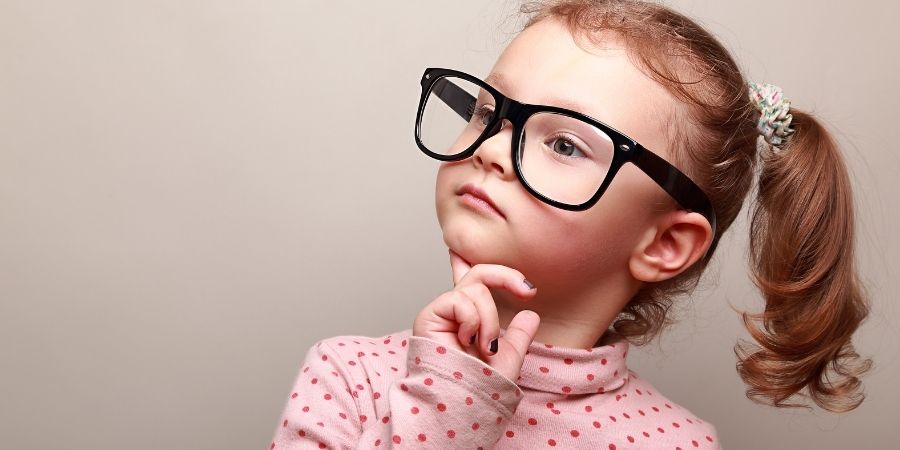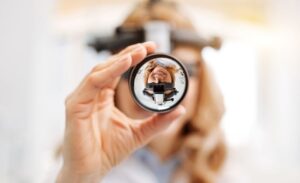Pediatric Eye Exams
Everything You Need To Know About Pediatric Exams
Eye exams are an important aspect of children’s health, yet many parents are not aware of the importance of early detection and treatment of pediatric eye problems. In this blog, we will discuss everything you need to know about pediatric eye exams, including the different types of exams, when to schedule them, what to expect, common eye problems in children, and available treatment options.
Eye exams for children are crucial for detecting and correcting any vision problems that may impact their development, learning, and overall quality of life. Pediatric eye exams are designed specifically for children, taking into account their age, developmental stage, and visual needs.
Types of Pediatric Eye Exams
There are several types of pediatric eye exams, including comprehensive eye exams, vision screening tests, and dilated eye exams.
● Comprehensive Eye Exam: A comprehensive eye exam is a comprehensive evaluation of your child’s visual function and eye health. This exam typically includes a visual acuity test, refraction, and a comprehensive evaluation of the health of the eyes. This exam is recommended for children who are experiencing symptoms such as blurred vision, double vision, or frequent headaches.
● Vision Screening Test: Vision screening tests are quick and simple tests that are performed by a pediatrician, school nurse, or optometrist. These tests are designed to detect the presence of a visual acuity problem and determine if your child needs a comprehensive eye exam.
● Dilated Eye Exam: A dilated eye exam is an exam that involves the use of dilating drops to enlarge the pupils. This type of exam is recommended for children who are at risk for eye problems or who have already been diagnosed with a vision problem.
When to Schedule a Pediatric Eye Exam
Pediatric eye exams are recommended at various stages of a child’s development. The American Optometric Association recommends the following schedule for eye exams:
- Infants: A comprehensive eye exam is recommended for infants between the ages of 6 and 12 months.
- Toddlers: Another comprehensive eye exam is recommended for toddlers between the ages of 3 and 5 years.
- School-Age Children: Regular comprehensive eye exams are recommended for school-age children, typically once every one to two years.
Factors that may indicate the need for an eye exam include:
- Squinting or closing one eye to read or watch TV
- Tilting the head to see
- Frequent rubbing of the eyes
- Holding objects close to the face
- Difficulty with reading or completing homework
What to Expect During a Pediatric Eye Exam
During a pediatric eye exam, your child will undergo several tests to evaluate their vision and eye health. Here’s what you can expect during the exam:
Preparation for the Exam: Your child should avoid wearing any type of contact lenses for at least 24 hours before the exam, as well as remove any eye makeup.
Tests Performed During the Exam: The tests performed during the exam will vary based on your child’s age, symptoms, and overall health. Some of the tests that may be performed include:
- Visual acuity test: This test measures how well your child can see from a distance and up close.
- Refraction test: This test measures the need for glasses or contacts to correct any refractive errors.
- Cover test: This test checks for any misalignment of the eyes.
- Pupil test: This test checks the size and reaction of the pupils to light and dark.
- Eye muscle test: This test checks the strength and coordination of the eye muscles.
- Eye health evaluation: This evaluation checks for any signs of eye diseases, such as cataracts, glaucoma, and macular degeneration.
Role of the Parents During the Exam: Parents play a vital role during the pediatric eye exam. They should provide a complete history of their child’s eye and general health, as well as any symptoms their child may be experiencing. It is also important for parents to ask questions and voice any concerns they may have about their child’s vision or eye health.
Common Eye Problems in Children
There are several common eye problems that can affect children, including:
Refractive Errors: Refractive errors occur when the shape of the eye does not properly focus light on the retina, leading to vision problems such as nearsightedness, farsightedness, and astigmatism.
Amblyopia (Lazy Eye): Amblyopia occurs when the brain favors one eye over the other, causing the weaker eye to become “lazy”. This can lead to reduced vision in the affected eye if not treated early.
Strabismus (Eye Turn): Strabismus occurs when the eyes are not aligned properly, causing one eye to turn inward, outward, upward, or downward. This can lead to double vision and reduced vision in the affected eye if not treated early.
Nystagmus (Involuntary Eye Movement): Nystagmus is an involuntary movement of the eyes that can occur in both children and adults. This condition can lead to reduced vision and difficulty with visual tasks, such as reading and sports.

Treatment Options for Pediatric Eye Problems
If your child is diagnosed with a vision problem, there are several treatment options available, including:
Eyeglasses: Eyeglasses are a common and effective treatment option for refractive errors, such as nearsightedness, farsightedness, and astigmatism.
Contact Lenses: Contact lenses are another option for correcting refractive errors. They offer the advantage of being less noticeable than eyeglasses, but they also require proper care and maintenance.
Vision Therapy: Vision therapy is a type of treatment that involves the use of eye exercises and other techniques to improve vision and eye coordination. This type of treatment is often used for children with amblyopia, strabismus, and other eye problems.
Surgery: In some cases, surgery may be recommended to correct eye problems, such as strabismus or a crossed eye. This type of treatment is typically only considered after other options have been exhausted.
How The Michigan Contact Lens Specialists Can Help
Pediatric eye exams are an important aspect of children’s health and development. By understanding the different types of exams, when to schedule them, what to expect, common eye problems, and treatment options, parents can help ensure that their child’s vision and eye health are protected. If you have any concerns about your child’s vision or eye health, it is important to consult with a pediatric eye doctor to discuss the best course of action.
Pediatric Eye Exam Frequently Asked Questions
It is recommended to have your child’s first comprehensive eye exam between the ages of 6 months and 1 year. Early detection of any vision problems is crucial for proper visual development.
Children should have routine eye exams every 1-2 years, starting from the age of 3. However, if there are any concerns or risk factors for eye conditions, more frequent visits may be necessary.
During a pediatric eye exam, the eye doctor will assess your child’s visual acuity, eye alignment, eye movements, and general eye health. Additional tests may include retinoscopy, refraction, and a dilated eye examination.
To prepare your child for their eye exam, explain that a friendly doctor will be checking their eyes. It’s beneficial to make the experience positive by reassuring them that it doesn’t hurt and it’s like playing games with the doctor.
Some signs that may indicate vision problems in children include frequent eye rubbing, excessive tearing, sensitivity to light, squinting, holding objects too close or too far away, headaches, or consistently poor attention during visual tasks.
Common eye conditions in children include refractive errors (nearsightedness, farsightedness, and astigmatism), amblyopia (lazy eye), strabismus (misaligned eyes), and eye infections/allergies.
Yes, many vision problems in children can be corrected or managed. Prescription eyeglasses or contact lenses can help correct refractive errors, and treatments such as patching, eye exercises, or corrective surgeries can address amblyopia and strabismus.
While eye exams primarily focus on visual health, they can sometimes reveal signs of learning difficulties or developmental problems that may be impacting a child’s vision or overall learning ability. If any concerns arise during the exam, the eye doctor may recommend further evaluation.
If your child fails a vision screening at school, it is essential to schedule a comprehensive eye exam with an eye care professional. Vision screenings are quick assessments and can sometimes produce false positives/negatives, so a thorough examination will provide a more accurate assessment of your child’s vision.








